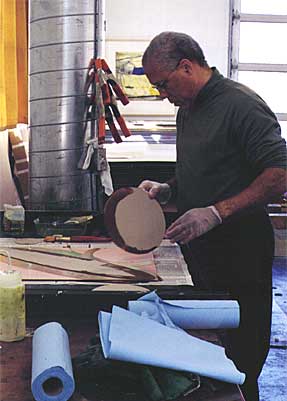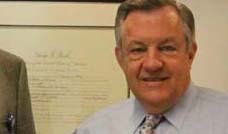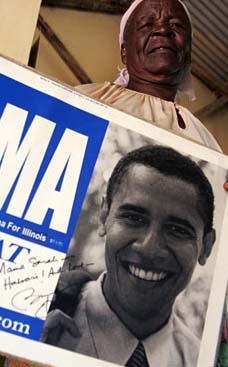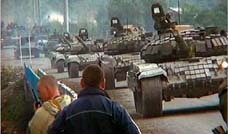
Before his studies at Yale, Puryear had gone to Sierra Leone in the Peace Corps, where he was able to experience living in a tribal culture, from which most black American slave ancestors originated. He then went to Sweden, a country in which craft tradition is still very much alive. And, after graduating from Yale, he went to Nashville, Tenn., to teach at a historically black college. By the mid-’70s he had established his unique style which is cognizant of many cultures and traditions, combining the craft of woodworking with modernist abstraction and informed by forms of the natural world.
Peter Selz writes: The Sculpture of Martin Puryear
The Sculpture of Martin Puryear
By Peter Selz Special to the Planet
Thursday December 04, 2008
Sculpture in America is at present at a high point, both in terms of quality and diversity. Currently, SFMOMA presents a retrospective by the celebrated African-American sculptor Martin Puryear, which came to San Francisco from New York’s Museum of Modern Art. It was preceded there by a major exhibition of the preeminent Richard Serra of giant curved steel slabs generating kinesthetic responses on the part of the visitor.
Puryear, in great contrast, creates hand-crafted work. He studied at Yale with Minimalist sculptors, including Serra, and then rejected art which was conceived by the artist and then fabricated industrially. Before his studies at Yale, Puryear had gone to Sierra Leone in the Peace Corps, where he was able to experience living in a tribal culture, from which most black American slave ancestors originated. He then went to Sweden, a country in which craft tradition is still very much alive. And, after graduating from Yale, he went to Nashville, Tenn., to teach at a historically black college. By the mid-’70s he had established his unique style which is cognizant of many cultures and traditions, combining the craft of woodworking with modernist abstraction and informed by forms of the natural world.
A large work, acknowledging the African-American educator, called Ladder for Booker T. Washington (1996), is a 36-foot-tall ladder, whose rungs diminish as they come closer to the far-away top. This work, referring to Washington’s illusionary dreams about slow upward mobility, was also seen when the Berkeley Art Museum mounted a fine smaller retrospective of Puryear in 2001.
In the present show the ladder is suspend above the lobby where the viewer also sees the large Ad Astra (To the Stars) (2007). Rooted in a pair of wagon wheels and a multifaceted black form, it leads to an ash sapling, which is extended by an additional tapered limb that seems to reach to the stars.
Most of the works are installed in a large high gallery on an upper floor. The display here is more generous than it was in New York, giving plenty of room to these pieces which need to be seen from all sides. Another sculpture that refers to black history is called C.F.A.O. (2006-07). The acronym stands for Compagnie Française de l’Afrique Occidentale, which was the name of a trading company implicated in the slave trade. Here the artist used an old wheelbarrow which he found at Alexander Calder’s property in France, on which he mounted a dense scaffold of interlocking pine rails to which he attached an oversize Gabon mask. All these elements with their different cultural implications evoke thoughts about colonizations and cultural exchange. In the exhibition there are also a number of works of wire mesh which are covered with tar, pieces which appear solid when seen from a distance, but are actually crosshatched layers of mesh to which the tar was applied, resulting in sculpture which is translucent and opaque at the same time. Many of the abstract sculptures in the show refer to the real world, suggesting waterbirds, plants, baskets and boats.
In an interview printed in the catalog, the artist, whose work is on location in Boston, Philadelphia, New York, Seattle, and Tokyo, speaks of public sculpture, an issue of controversy here in Berkeley. He talks about allowing the sculpture “to hold its own next to the architecture and yet to have a relationship to the human moving across the plaza ... In addition to the pragmatic issues of working outdoors, making sculpture for public spaces forces the artist to confront the question of what it means to take his or her ideas ... out into the world where the work has to define itself. Under these circumstances the connection you can have with the public has a lot of uncertainty about it, but that’s what makes it an interesting challenge.”
MARTIN PURYEAR
Through Jan. 25 at the San Francisco Museum of Modern Art, 151 Third St., San Francisco. (415) 357-4000. www.sfmoma.org.













